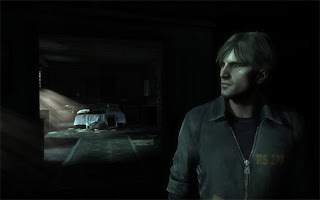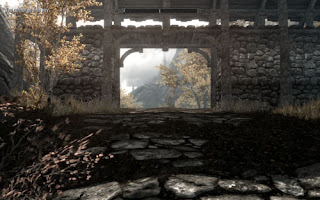Gamedev Bucket List – I – Tear down the wall
by Grungi
What do I want to accomplish while developing games ? This question has so many answers I could not for the life of me try and summarize them in a single blog post. We are only beginning to see what games are capable of as a medium, and each year technology puts new experience within our grasps. That is the beauty of games, and that is why I find them so fascinating. As I said earlier, I find myself constantly chasing new ideas, and so I have decided to make what you can call a “Gamedev Bucket List”. And it better be something you can call that, because that is what I called it…
Anyway, this will be a repository of some broad ideas, not even full game ideas, that I would want to work on at some point. These are not anything like a plan of what I am going to do, but just a reflexion on what I would want to if I could. These posts will also be a good occasion to ponder on some design points from some of my favourite games along the way.
So, without further ado, here comes the first item on my bucket list :
I – No invisible walls
That’s right. I would love to work on a world that doesn’t contain artificial, explicit borders. In most games, your avatar is limited in its movement by a variety of arbitrary obstacles. All games have to do that, otherwise you would end up with something unmanageable, but some handle it more gracefully than others.
[01] The lazy hero
This first kind of way to funnel the player down an intended path is easily the worst. How many adventurers have you controlled that stubbornly refuse to lift their weight to leap over a tiny chasm or step over a tiny bush that is “blocking the way”. I find survival horror titles, RPGs and some FPSes to be the wors offenders there.
To take a recent example, right at the beginning of Silent Hill Downpour, you will most likely try to go uphill, only to have your path cut off after a handful of steps by the fall of a tree. This could be a believable way to hinder your progress if it was not a waist-high obstacle… But apparently, otherwise fit protagonist Murphy Pendleton cannot be bothered to hop over the thing and continue on his way.
This is a glaring example, but that kind of things plague countless games, and usually it is very noticeable when involving vegetation. Or when a simple wooden door supposedly resists to the ten grenades you just threw at them. I personally consider this practice as the worst way of handling the problem. You could as well have a big sign reading “Attention, you are in a videogame, please move along” for the way they break the immersion of the player.
[02] Thou shall not pass!
No better than the first kind of barriers for immersion, you have the real invisible walls. Walking too close to the edge of the map ? A stern command from above will tell you that “There is no reason to go further in that direction”. “But”, will you say, “there is a reason! I want to explore!” Unfortunately, that is not what the powers that be intended for you, so turn back, that is your only option. This plagues many open-world games. A recent example of that can be found in Skyrim, where a tantalising door stand, wide open, between you and another province full of adventure. But, you know, “You cannot go that way.”. Sigh.
[03] You cannot beat nature
Next, there is a quantum leap in quality for this next method. Because it mostly stays within the confine of the game universe, and thus keep things feeling coherent. I want to speak of the use of natural elements to keep you in the sanctioned play area. The most usual implementation of this is making wind pick up more and more as you reach the edge of the map, until the character is blown several steps back by a particularly strong gust of wind. Thatgamecompany’s Journey does that in all of its open maps, where it quite frankly is the only viable solution they had given the scenery.
Another game doing that is Shadow of the Colossus. The game world is huge, and for the most parts completely self-contained and devoid of very noticeable invisible walls. But there is a single spot in the game which has them use the wind blowback technique. This is to my knowledge one of the most tasteful application of that mechanism, because it looks really plausible seeing the configuration of that particular spot. Not only that, you also have to go really out of your way to reach said place…
[04] Getting there
The next, again much better way to keep players where they belong is simply using your level design to make it impossible to leave. Either by making the environment impossible to navigate with your character’s capacity, like, for example in Mirror’s Edge, where a simple high building or a wide enough street can prevent you to stray out of your way.
Or by using some other tricks. Like Portal games, where you are placed in a tightly constrained environment. Even with a quasi-magical portal gun, you are strictly limited in the places you can attain.
Again, these techniques have the advantage of enforcing the developer’s decisions without leaving the game’s fiction. But most of the time you end up with levels that do not feel truly “open”. Because you can more or less feel the constraints placed on you. Even in Shadow of the Colossus, which for the most part uses this strategy with high cliffs surrounding the vast world, you cannot help but feel somewhat “trapped” when you go next to the world’s borders. Still, it is for many games the best you can achieve. But as a dream goal, it still does not quite cut it. What I am looking for is…
[05] The Holy Grail
And I think I found it in a game that I am currently playing : Xenoblade. The big stroke of genius of that game lies in its world. For all the good that could be said on the gameplay and story (so far), its world takes the cake.
Monolith Soft as managed to craft a huge, open, and almost seamless world like nothing I have been able to experience in a game. The main trick is that the game world is actually the frozen bodies of two colossal titans. Life had colonised the giants and now legs, arms, heads and backs have become lush plains, intriguing swamps and dense jungles. The variety on display is really great, and doesn’t feel out of place thanks to the strange geometry of the world itself. Skip around the video below to get a taste of it :
Now then, if there are plains stretching over several kilometers, surely there are a lot of inaccessible areas ? Well, no, not really. The catch is that because of the peculiar setting, it makes sense that the ground continues only so far. The regions have natural edges that coherently restrict your movements. Of note is the fact that you can easily fall off the world. No invisible handrail will keep you safe… For the rest, everything is accessible if you can jump/run/plunge to it. And yes, your character can swim. So that distant coast ? You can probably reach it. Experiencing this, on a Wii no less, feels like such an eye-opener. The freedom of movement is really a delight, and the fact that each zone is one big area without any loading time makes the scale of the places really impressive. It is a concrete proof that you can have a vast, densely populated world, and make it enjoyable without having to resort to putting some areas arbitrarily off-limits.
Conclusion
So that bucket list you ask? Well, I want to craft a world without those pesky invisible and arbitrary barriers. It could be a city block or it could be a whole continent, but I want to be able to devise an area that will seem naturally coherent and still be fully explorable. I want to give players that thrill that accompanies those moments when you realise that yes, you can actually go all the way there. And never tell them that they should “go back from where they came”.






